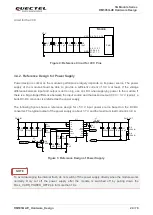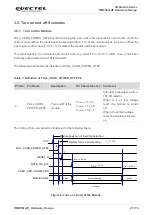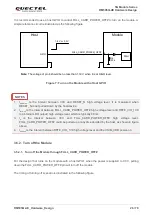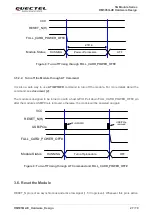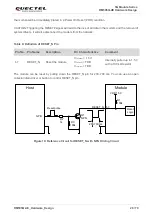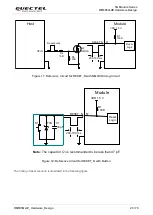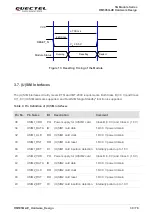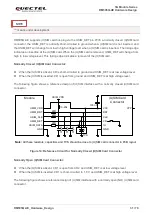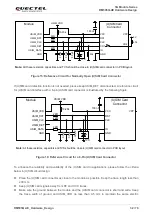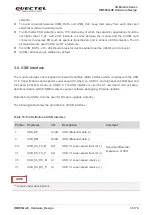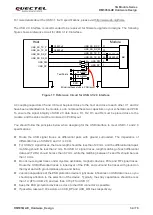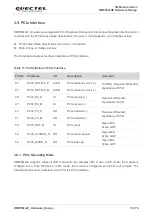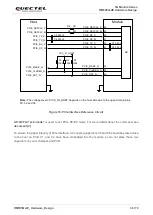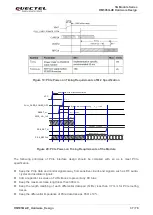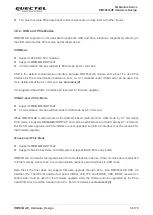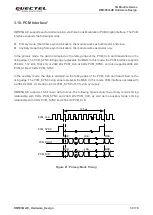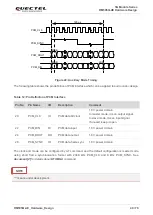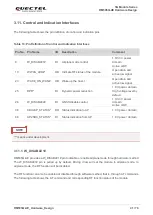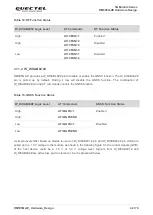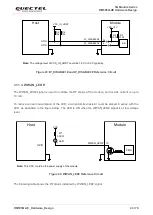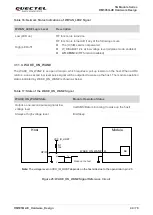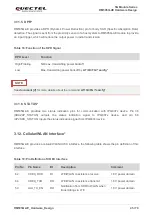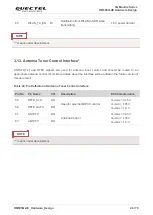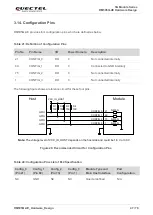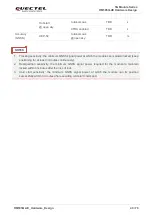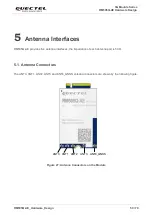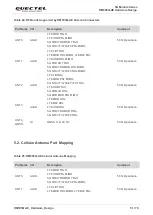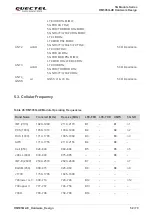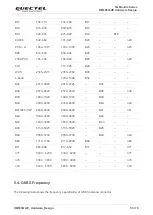
5G Module Series
RM505Q-AE Hardware Design
RM505Q-AE_Hardware_Design 38 / 79
⚫
You must not route PCIe data traces under components or cross them with other traces.
3.9.2. USB and PCIe Modes
RM505Q-AE supports to communicate through both USB and PCIe interfaces, respectively referring to
the USB mode and the PCIe mode, as described below:
USB Mode
⚫
Supports all USB 2.0/3.1 features
⚫
Supports MBIM/QMI/QRTR/AT
⚫
Communication can be switched to PCIe mode by AT command
USB is the default communication interface between RM505Q-AE module and a host. To use PCIe
interface for the communication between a host, an AT command under USB mode can be used. For
more details about the AT command, see
document [2]
.
It is suggested that USB 2.0 interface be reserved for firmware upgrade.
USB-AT-based PCIe Mode
⚫
Supports MBIM/QMI/QRTR/AT
⚫
Communication can be switched back to USB mode by AT command
When RM505Q-AE module works at the USB-AT-based (switched from USB mode by AT command)
PCIe mode, it supports MBIM/QMI/QRTR/AT, and can be switched back to USB mode by AT command.
But the firmware upgrade via PCIe interface is not supported, so USB 2.0 interface must be reserved for
the firmware upgrade.
eFuse-based PCIe Mode
⚫
Supports MBIM/QMI/QRTR/AT
⚫
Supports Non-X86 systems and X86 system (supports BIOS PCIe early initial)
RM505Q-AE can also be reprogrammed to PCIe mode based on eFuse. If the communication is switched
to PCIe mode by burnt eFuse, the communication cannot be switched back to USB mode.
Note that if the host does not support firmware upgrade through PCIe, then RM505Q-AE USB 2.0
interface (Pin 7 and Pin 9) and two test points (VREG_L6E_1P8 and FORCE_USB_BOOT, reserved on
bottom side) must be used for the firmware upgrade. Also, the firmware can be upgraded by the PCIe
Card EVB, which could be inserted into a PC. For more details, see
document [1]
.

